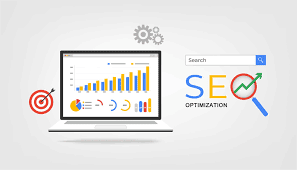Hi there friend! Are you tired of throwing content into the void, hoping it magically attracts customers? Do you dream of knowing exactly what your audience craves, in real-time? Well, wake up, marketers, because the future is here! Real-time visitor insights are the key to unlocking content marketing success that will blow your mind and your competition out of the water.
From Guesswork to Game Changer: Why Real-Time Insights Matter
Let’s face it, traditional content marketing strategies are like shooting arrows in the dark. You think you’re targeting the right audience, but you’re never truly sure. Data analytics, specifically real-time visitor insights, changes everything. It’s like switching on a floodlight in a pitch-black room, revealing exactly what your audience is doing, thinking, and feeling as they interact with your content.
Imagine this: you see a visitor lingering on a specific blog post, scrolling back and forth, highlighting certain phrases. Bingo! You’ve struck gold. You know exactly what resonates with them, what questions are bubbling in their minds. You can then tailor your content, your calls to action, and your entire marketing strategy to meet their needs in that very moment.
The Power of Personalization: Turning Visitors into Raving Fans
We all crave personalized experiences. Think about how excited you get when Netflix recommends a show that perfectly aligns with your taste. That’s the power of personalization, and it’s a game-changer for content marketing.
Real-time visitor insights fuel personalization. By understanding your audience’s behavior, preferences, and pain points as they engage with your content, you can:
- Craft targeted content that speaks directly to their needs: No more generic blog posts that disappear into the internet abyss.
- Deliver personalized recommendations and offers: Imagine suggesting products or services based on what a visitor is browsing in real-time.
- Create a seamless, tailored experience across all touchpoints: From your website to your emails to your social media, every interaction will feel personal and relevant.
Think of Amazon, the e-commerce giant that personalizes product suggestions based on your browsing history and purchases. They’ve cracked the code, and with real-time insights, you can too!

Beyond Content: Real-Time Insights for Product Development and Customer Experience
The magic of real-time visitor insights doesn’t stop at content marketing. It’s a goldmine for product development and customer experience optimization.
Here’s how:
- Identify customer pain points: Are visitors struggling to navigate your website? Are they abandoning their shopping carts at a specific stage? Real-time insights can pinpoint these issues, allowing you to make necessary adjustments for a smoother experience.
- Gather feedback and sentiment: Understand how customers feel about your brand and your products by analyzing their interactions and engagement with your content.
- Develop better products and features: Real-time insights provide invaluable data to product managers, helping them generate ideas, create prototypes, and implement real-time adjustments.
By harnessing these nuggets of information, you can:
- Increase customer satisfaction: Solve their problems, anticipate their needs, and create an experience they’ll love.
- Boost customer retention: Happy customers are loyal customers. Give them a reason to stick around!
- Build a stronger brand reputation: A positive customer experience translates into glowing reviews and word-of-mouth referrals.
From Zero to Hero: Implementing Real-Time Insights in Your Strategy
Ready to ditch the guesswork and transform your content marketing with real-time visitor insights? Here’s your step-by-step guide to success:
1. Define Your Goals and Objectives:
- What do you want to achieve with real-time insights? Do you want to increase brand awareness, drive more conversions, or improve customer satisfaction?
- Make sure your goals are specific, measurable, and aligned with your overall business objectives.
2. Know Your Target Audience:
- Who are you trying to reach? What are their demographics, interests, and pain points?
- Use surveys, focus groups, and online analytics tools like Google Analytics to gather data about your audience’s behavior, preferences, and needs.
3. Choose the Right Tools:
- Invest in marketing analytics tools that provide real-time visitor insights. Some popular options include Google Analytics, Semrush, and HubSpot.
- Make sure the tools you choose align with your goals and offer the specific insights you need.
4. Create Compelling Content:
- Based on your audience research and real-time insights, develop high-quality content that resonates with your target audience.
- Consider different content formats, such as blog posts, videos, infographics, and podcasts, to cater to diverse preferences.
5. Optimize Your Content for Search Engines:
- Implement search engine optimization (SEO) strategies to ensure your content ranks highly in relevant search results.
- This will increase organic traffic to your website and attract potential customers.
6. Personalize the User Experience:
- Use real-time insights to tailor your website content, recommendations, and offers based on individual visitor behavior.
- Create a dynamic, personalized experience that feels relevant and engaging.
7. Monitor and Analyze Your Results:
- Track key metrics such as website traffic, bounce rate, engagement rates, conversions, and click-through rates.
- Analyze the data to understand what’s working, what’s not, and how you can continuously optimize your strategy for better results.
8. Adapt and Evolve:
- The world of content marketing is constantly changing. Stay up-to-date with the latest trends and technologies.
- Be willing to experiment, adapt your strategy based on real-time insights, and never stop learning.

Conclusion
Gone are the days of relying solely on intuition and creativity in content marketing. Data analytics, especially real-time visitor insights, are the driving force behind successful, results-driven campaigns.
By embracing a data-driven approach, you can:
- Gain a deep understanding of your audience’s behavior and preferences
- Create personalized content that resonates and converts
- Optimize your website and marketing strategy for maximum impact
- Develop better products and services that meet customer needs
- Build a loyal customer base and a thriving brand
Don’t be left behind in the content marketing revolution. Embrace real-time visitor insights and unlock the secrets to content domination!
FAQs
What are some examples of real-time visitor insights? Real-time visitor insights can include:
- Page views: The number of times a specific page has been viewed.
- Time on page: The amount of time a visitor spends on a particular page.
- Scroll depth: How far down a page a visitor scrolls.
- Click-through rates: The percentage of visitors who click on a specific link or call to action.
- Heatmaps: Visual representations of where visitors click, scroll, and hover on a page.
- User recordings: Recordings of individual visitor sessions, allowing you to see their exact actions on your website.
What are the best tools for gathering real-time visitor insights? Some popular tools for gathering real-time visitor insights include:
- Google Analytics: A free and powerful web analytics platform that provides a wealth of data about your website traffic and user behavior.
- Semrush: An all-in-one marketing toolkit that includes features for SEO, content marketing, competitor analysis, and real-time website analytics.
- HubSpot: A comprehensive marketing and sales platform that offers a variety of tools, including real-time visitor tracking and analytics.
How can I use real-time visitor insights to improve my content marketing strategy? Real-time visitor insights can be used to improve your content marketing strategy in a number of ways:
- Identify popular content topics: See which pages are getting the most views and engagement.
- Optimize content for conversions: Track which calls to action are performing best and adjust your content accordingly.
- Personalize the user experience: Tailor your website content and offers based on individual visitor behavior.
- Improve website navigation: Identify areas where visitors are getting stuck or dropping off and make necessary adjustments.

